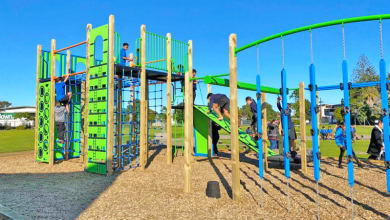Schools power up with solar

Solar powering your school makes sense for sustainability role modelling, for long-term finances, and for the environment.
So, what is holding schools back from switching to the power of the sun?
In 2021, schools should have a sustainability or energy efficiency programme. This should outline basic energy efficiency improvements the school could make such as improved insulation, energy control devices like thermostats and water heater timers, LED lighting installation. It should also include energy efficiency education. Schools may choose to invest further by committing to installing solar power.
Schools may decide to purchase solar panels or enter a lease arrangement with a solar provider. Either way, a Ministry Property Advisor should be consulted before installing solar panels at school.
First, before approaching a Ministry of Education Property Advisor to discuss their proposed solar power installation project, schools need to do their research. Start by consulting a solar provider/s and request a proposal tailor-made for the school’s property.
Consider the payback period – the time it will take to cover the costs of initial outlay from electricity savings made. For this, consider the upfront cost of solar panel system installation, the unit cost ($/kWh) for the generated electricity (variable charges) and the amount of electricity used during daylight hours, when the sun is shining.
Location, location, location
Where does the sun hit your school for most of the day?
Are there any possible impediments to the effectiveness of solar panels near the property, such as potential tree growth or possible building developments? Industry suppliers can advise you on this.
Find out if the solar system includes battery storage. This can be a good investment for a school and can avoid outages associated with a grid electricity power cut. Solar power systems without on-site battery storage will shut down in the event of a power cut as a safety measure. The larger battery system installed the less compromised power will be during a power cut. The MoE recommends assessing which energy services are essential for maintaining normal service during the school day and ensuring the proposed system is sufficient to meet these requirements.
As well as installation, maintenance must also be taken into account. How will the panels be cleaned? What are the additional charges for maintenance and repair? Check how much of this is included in the provider’s package.
What about warranties?
There are four types in regards solar panel systems.
- Panel product warranty: This covers defective materials or workmanship in the manufacture of the panels. It is provided by the panel manufacturer, not the installation company. Ensure the product warranty for your panels is at least 10 years.
- Panel performance warranty: This provides protect against the degradation of panel cells over 25 years.
- Inverter warranty: The inverter warranty is very important as this is the part of your system that is most likely to fail, according to the MoE’s advice on solar systems in schools. They suggest inverters will generally have a five to 10-year warranty.
- Installation warranty: Equally important, the installation warranty is provided by the installer. This should outline what you will be charged for in the case of a breakdown. Check it includes call out fees and whether the entire system is covered or separate parts.
Something else to consider is the state of the school roofing. Solar panels may need to be removed and reinstalled if problems arise with the roof. Carry out any minor roof maintenance necessary and consider the length of time in which the roof will need to be upgraded or replaced and factor this into the equation.
A school’s Ten Year Property Plan (10YPP) must be amended in agreement with the MoE before solar panel installation takes place, due to the impact this has on a school’s existing infrastructure.
A Sustainable Electricity Association of New Zealand member must install the solar system – this is a MoE requirement regardless of whether the solar panels are owned by the Ministry, the school, or a third party.
What programs are out there?
There are many ways schools can reap far-reaching educational benefits alongside their solar power installation project.
Solar power installation can provide countless opportunities for learning, inside and outside the classroom. Schools can maximise the educational benefits of introducing solar energy by involving students in the project, throughout the process, creating a positive, whole school buy in and sustainability story to shout out. The green ripple can cause a positive effect far into the community.









